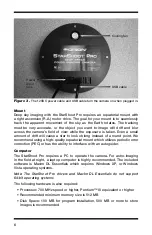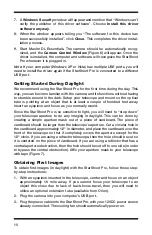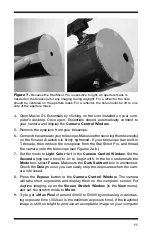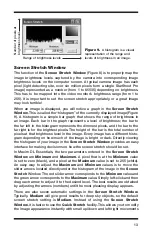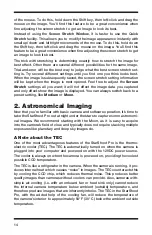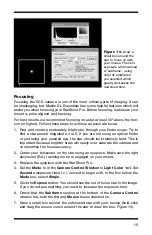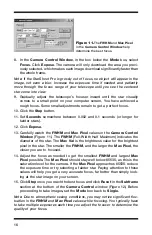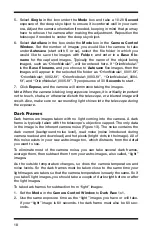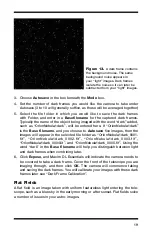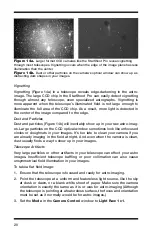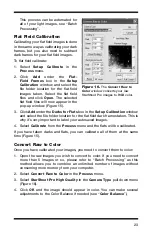
18
5. Select
Single
in the box under the
Mode
box and take a 10-20
Second
exposure of the deep sky object to ensure it is centered well in your cam-
era. Adjust the camera orientation if needed, keeping in mind that you may
have to refocus the camera after making the adjustment. Reposition the
telescope if needed to center the deep sky object.
6. Select
AutoSave
in the box under the
Mode
box in the
Camera Control
Window
. Set the number of images you would like the camera to take
under
Autosave
(start with 5 or so), select the file folder in which you
would like to save the images with
Folder
, and enter in a
Base file-
name
for the captured images. Typically the name of the object being
imaged, such as “OrionNebula1”, will be entered here. If “OrionNebula1”
is the
Base filename
, and you choose to
Autosave
five images, then the
images will appear in the selected file folder as “OrionNebula1_0001.fit”,
“OrionNebula1_0002.fit”, “OrionNebula1_0003.fit”, “OrionNebula1_0004.
fit”, and “OrionNebula1_0005.fit”. Try exposures of 30
Seconds
to start.
7. Click
Expose
, and the camera will commence taking the images.
Note: When the camera is taking long exposure images, it is critically important
not to touch, shake, or otherwise disturb the telescope, or a blurred image will
result. Also, make sure no surrounding light shines into the telescope during
the exposure.
Dark Frames
Dark frames are images taken with no light coming into the camera. A dark
frame is typically taken with the telescope’s objective capped. The only data
in the image is the inherent camera noise (Figure 13). The noise contains the
dark current (background noise level), read noise (noise introduced during
camera readout and download) and hot pixels (bright dots in the image). All of
this noise exists in your raw astro-image too, which distracts from the detail
you want to see.
To eliminate most of the camera noise, you can take several dark frames,
average them, then subtract them from your astro-images, also called, “light”
images.
As the outside temperature changes, so does the camera temperature and
noise levels. So the dark frames must be taken close to the same time your
light images are taken, so that the camera temperature is nearly the same. So if
you take 5 light images, you should take a couple of darks right before or after
the light images.
To take dark frames for subtraction from “light” images:
1. Set the
Mode
in the
Camera Control Window
to
Dark Raw
1x1.
2. Use the same exposure time as the “light” images you have or will take.
If your “light” image is 60 seconds, the dark frame must also be 60 sec-
onds.



